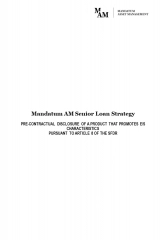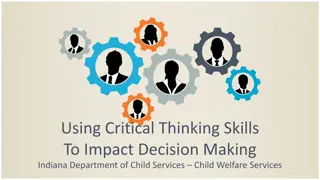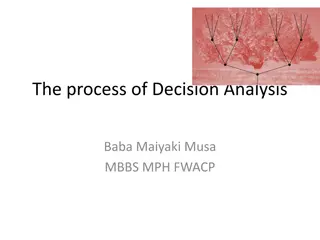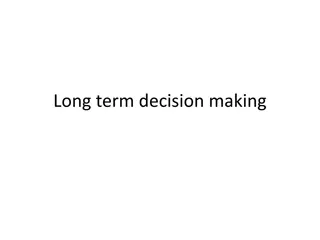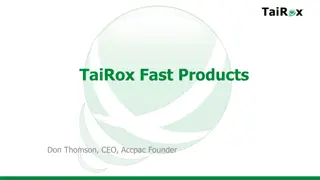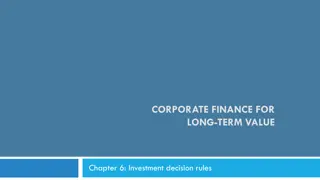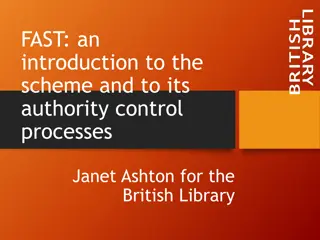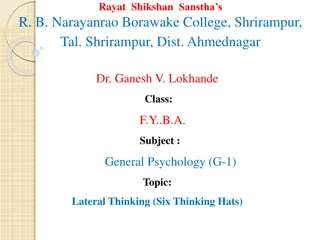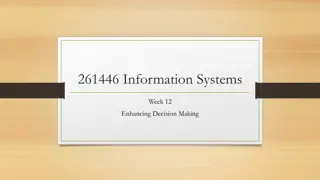Understanding Fast Thinking in Investment Decision-Making
Explore the impact of fast thinking on investment decisions through a study on a peer-to-peer lending platform in China. Discover how time pressure, salience, and firsthand experience influence investor behavior, leading to a focus on interest rates over credit ratings. Data findings reveal insights on loans and investors' demographics, highlighting differences in fast loans versus others.
Download Presentation

Please find below an Image/Link to download the presentation.
The content on the website is provided AS IS for your information and personal use only. It may not be sold, licensed, or shared on other websites without obtaining consent from the author. Download presentation by click this link. If you encounter any issues during the download, it is possible that the publisher has removed the file from their server.
E N D
Presentation Transcript
Investing with Fast Thinking Authors: Li Liao, ZhengweiWang, Jia Xiang, HongjunYan, Jun Yang Presented by: Yang Ju Instructor: Philip Dybvig
Objective How fast thinking affects investment decisions in real financial market? How do investors make financial decisions with fast thinking? Are the decisi0ns cost- efficient, near optimal or systematic errors? What are the factors that shape the decision rules?
Fast Thinking System 1: Operates automatically, quickly, with little or no effort May lead to systematic mistake Fast Thinking System 2: Slow and deliberate Allocates attention to effortful mental activities
Renren Dai Online peer-to-peer (P2P) lending platform Bidding on unsecured microloans listed by borrowers Leading P2P company in China
Findings Investors focus on loans with high interest rates, disregarding information on credit ratings Three factors: Time pressure Salience Firsthand experience
Procedure Hypothesize Under time pressure, investor s attention focuses on interest rate; disregard other important information, such as credit ratings Support: 1. Renren Dai s principle guarantee mechanism Repay investor s principle if default occurs 2. Interest rate s prominent location on the platform
Data Findings Sample Contains: 10,385 loans 205,724 investments 25,314 unique investors Findings: 71.2% (HR) loans 87.3% male borrowers Average age of 32.9 55.5% of homeowners 21.7% with mortgage
Fast loans vs. others Fast Loans Term: 10.57 months Amount: 13,873 Age: 31.31 Default rate: 19.8% Interest rate: 13.71% Others 10.21 months 29,299 33.43 16.7% 12.36%
Primacy of Interest rate Whether decision speed depends on interest rate OLS regression of Fulfillment time on Interest rate and HR(High risk) Interest rate: -0.206 t-statistic: >19 1 SD increase in Interest rate (2.2%) decreases Fulfillment time by 36% Other findings (funded quickly): Borrower with graduate degree Monthly income between 5,000-10,000 Own a house
Time Pressure Empirical Evidence: Fulfillment Time is more sensitive to interest rate Investors rely more on fast thinking; thus more responsive to interest rate Experimental Evidence: 36 (treatment) vs. 36 (control) Training Session and 30 mins to study 50 loan Decision Time: Treatment (42s) vs. Control(180s) Survey Questions
Time Pressure Results Treatment Group Chose loans based primarily on interest rates Rely more on intuition Interest rate as most important: 47% Credit rating: 19% Intuition Score: 4.81 Control Group On interest rate, as well as credit ratings and etc. Less on intuition 17% 44% 3.72
Salience Empirical Evidence: Mobile interface further encourage investors make decision based on interest rate Panel Regression: mobile bidders are 13.5% faster than PC bidders Experimental Evidence: Modified mobile app interface 3 groups Survey Questions
Salience Results: With more visible information, investors slow down decision process and incorporate the additional info. Into their decisions Group 1: Interest rate as most important: 39% Credit risk as most important: 23% Group 2: 19% 35% Group 3: 26% 47%
Firsthand Experience Empirical Evidence: Additional loan investment experience increase decision time by 1 second After experiencing default, investors take 80s more to make decisions 3.1% Less likely to choose HR loans with recent default 28 basis points increase in return annually Experimental Evidence: 34(treatment) vs. 34(control) Same training 2 rounds of loan picking
Firsthand Experience Results Group 1 (control) Interest rate as most important: 50% Credit rating as most important: 34% Group 2(treatment) 23.53% 45%
Conclusion Investor s attention focuses on interest rate; disregard other important information, such as credit rating Three important factors: Time pressure salience of the information firsthand experience Under Time Pressure, decisions that focus on the most important factors can be near-optimal strategies


